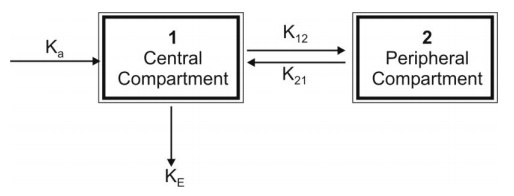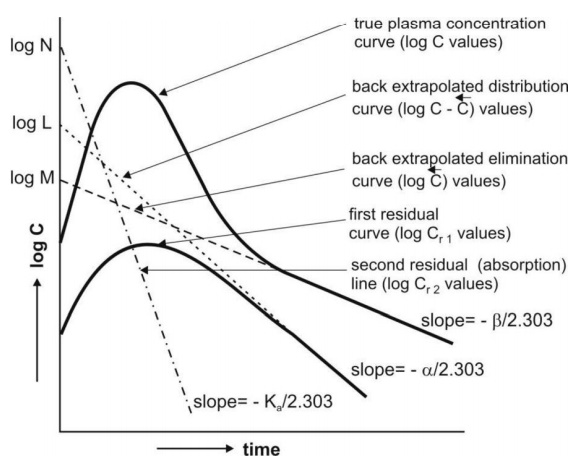Two-Compartment Open Model: Extravascular Administration - First-Order Absorption
| Home | | Biopharmaceutics and Pharmacokinetics |Chapter: Biopharmaceutics and Pharmacokinetics : Compartment Modelling
For a drug that enters the body by a first-order absorption process and distributed according to two-compartment model.
Two-Compartment Open Model
Extravascular Administration – First-Order Absorption
The model can be depicted as follows:

For a drug that enters the body by a first-order
absorption process and distributed according to two-compartment model, the rate
of change in drug concentration in the central compartment is described by 3 exponents —an absorption exponent, and
the two usual exponents that describe drug disposition.
The plasma concentration at any time t is given by
equation:

C = Absorption exponent + Distribution exponent + Elimination
exponent
where Ka, α and β have usual meanings. L, M and N are coefficients.
The 3 exponents can be resolved by stepwise
application of method of residuals assuming Ka > α > β as shown in Fig. 9.14. The various pharmacokinetic parameters can then
be estimated.

Fig. 9.14. Semilog plot of C versus t of a drug with two-compartment
characteristics when administered extravascularly. The various exponents have
been resolved by the method of residuals.
Besides the method of residuals, Ka can
also be estimated by Loo-Riegelman
method for a drug that follows two-compartment characteristics. This method
is in contrast to the Wagner-Nelson method for determination of Ka
of a drug with one-compartment characteristics. The Loo-Riegelman method
requires plasma drug concentration-time data both after oral and i.v.
administration of the drug to the same subject at different times in order to
obtain all the necessary kinetic constants. Despite its complexity, the method
can be applied to drugs that distribute in any number of compartments.
Related Topics
